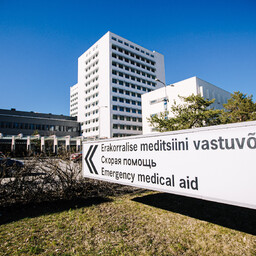Haiglate EMO-d töötavad samamoodi nagu enne
visiiditasu tõus
u. Patsientide arv EMO-sse pole märkimisväärselt muutunud. Põhja-Eesti Regionaalhaiglas on täheldatud muutust pöördumiste tüüpides. Vanemad patsiendid eelistavad minna perearsti juurde, kus teenus on tasuta. Nooremad patsiendid tulevad EMO-sse kergemate muredega ja ootavad pikalt.
visiiditasu tõus
Tõlge fraasile: visiiditasu tõus
EN
increase in visit fee
PERHis käib päevas EMO-st läbi üle 200 patsiendi. Umbes pooled tulevad kiirabiga. Üle poole on inimesed, kes tulid ise ja neil on
kergemad tervisemured
. Maikuust alustas PERH uue süsteemiga, kus kergema murega patsiendid saavad abi eriõdedelt. See aitab arstide töökoormust vähendada.
kergemad tervisemured
Tõlge fraasile: kergemad tervisemured
EN
minor health issues
Ida-Tallinna Keskhaiglas ei ole
visiiditasu tõus
mõju avaldanud. Suvel on patsiente rohkem, kui perearstid on puhkusel ja inimesed teevad rohkem sporti. ITK arendab ka eriõe vastuvõttu, et arstide koormust vähendada.
visiiditasu tõus
Tõlge fraasile: visiiditasu tõus
EN
increase in visit fee
Mõlemad haiglad loodavad suunata kergema murega patsiendid perearstide juurde pärast
triaažiõe vaatus
t. See vajab veel kooskõlastust. Pärnu Haiglas on suvel rohkem traumasid, kuumarabandusi ja alkoholi liigtarvitamist. Samuti saabub rohkem patsiente sotsiaalsete probleemide tõttu.
triaažiõe vaatus
Tõlge fraasile: triaažiõe vaatus
EN
triage nurse examination
Tartu Ülikooli Kliinikumis suunatakse rohkem kergeid juhtumeid eriõdedele. Samuti pöördutakse EMO-sse köha ja nohu pärast, sest inimesed kardavad kopsupõletikku. Perearsti juurde on raske aega saada, mistõttu inimesed tulevad EMO-sse.
Oluline on, et inimesed teaksid, milliste muredega EMO-sse pöörduda ja kuidas perearsti kätte saada. Perearsti esimene kontakt on reeglina pereõega, kellega saab suhelda telefoni või e-posti teel.
Hospital emergency departments are operating in the same way as before the fee increase. The number of patients visiting emergency departments has not significantly changed. At the North Estonia Medical Centre, a change in the types of visits has been observed. Older patients prefer to go to their family doctor, where the service is free. Younger patients come to the emergency department with minor issues and wait for a long time.
PERH sees over 200 patients pass through the emergency department daily. About half arrive by ambulance. More than half are people who came on their own with minor health concerns. Since May, PERH has started a new system where patients with minor issues receive assistance from specialized nurses. This helps reduce the workload of doctors.
At Ida-Tallinna Central Hospital, the fee increase has had no impact. In the summer, there are more patients when family doctors are on vacation and people engage in more sports. ITK is also developing specialized nurse consultations to reduce the workload of doctors.
Both hospitals hope to direct patients with minor issues to family doctors after a triage nurse's assessment. This still needs coordination. In Pärnu Hospital, there are more traumas, heatstrokes, and alcohol abuse cases in the summer. More patients also arrive due to social problems.
At Tartu University Hospital, more minor cases are being directed to specialized nurses. People also turn to the emergency department for coughs and colds because they are afraid of pneumonia. It is difficult to get an appointment with a family doctor, so people come to the emergency department.
It is important that people know what issues to address at the emergency department and how to get in touch with a family doctor. The first contact with a family doctor is usually with a nurse, who can be reached by phone or email.

